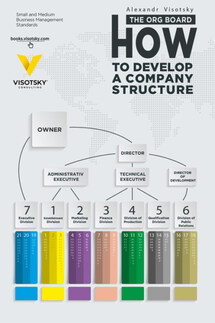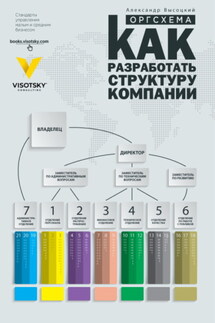A Job Description for the Business Owner - страница 9
In 2003, my business partner and I formulated one of the purposes of the Geroldmaster Company—namely, “to produce medals that perfectly match their designers’ creative ideas while prioritizing quality over the manufacturing process.” It may seem a strange purpose for a manufacturing company, but that is how it was stated at the outset. The fact is, the company started with just a small office specializing in medal design. It was founded by designers who had a pretty good but, as it later turned out, naïve idea. They saw the medals that Ukraine received from the USSR and decided to design more inspiring ones. The underlying idea was “to design and fulfill manufacturing orders using already existing facilities,” but the idea contained the above-mentioned purpose. When the first orders of Jubilee Awards for the State Corporation for the Production of Armaments and the Emeritus Employee of the Tax Service medals were designed and manufactured, two things became clear. First, the existing manufacturing facilities could only produce products at the prior level of quality, rather than improved, value-added quality. Second, these manufacturing facilities could only produce the products they had been producing for years, since the idea of making the processes faster and cheaper had been the most important standards to follow. It was impossible to implement Geroldmaster’s purpose with this approach. That was the reason that, over time, the design office eventually turned into a manufacturing facility with a unique production cycle of models and molds for manufacturing medals. The unique part was that when the customer approved a medal design, special software allowed all of the geometrically correct elements of the medal to be modeled, directly based on the approved design. If the medal contained a wreath, figures, or any reliefs, their prototypes were hand-sculpted first. Next, a 3-D scan was performed, the model was finished on the computer, and special equipment transferred the computer model into a metal one. As far as I know, to this day it is the only facility with such fast and perfect manufacturing tooling technology. The creation of such a process was not just the owners’ whim. All we wanted to do was accomplish the main purpose: to make sure the manufactured medals matched the intended design. It was simple, made sense, and proved to be commercially successful. Despite fairly high prices, our customers came back to us time and again. None of our competitors could match the same level of quality, and with regard to medals, people were not willing to compromise quality in order to save money. I am not saying there were no customers who prioritized price; they just weren’t Geroldmaster’s customers. This is neither good nor bad, as it is impossible to satisfy everybody’s needs: those who want well made products and those who want cheap ones. That is why companies with different purposes are needed. In the end, there will always be a Mercedes and there will always be a KIA. Such companies have different purposes and, accordingly, different customers.
Incidentally, when a business is just getting started, there is always some new purpose being formed—for example, “We repair used Japanese cars,” or “We bake confectionary products according to local customers’ tastes.” These are not the most ideal purpose statements. The more specific a purpose is, the stronger it is. One could say that, ideally, the intent should have some unique element that provides a competitive advantage.









